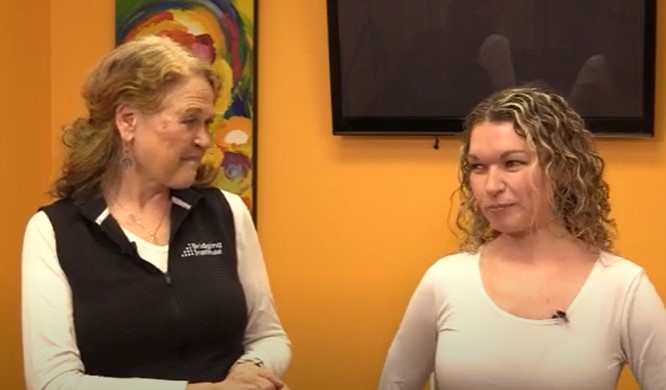Back Stuck in a Painful Twist?
Too much twisting has Liz’s back in a knot
Sometimes the way we need to use our bodies at work can cause stress and strain, especially to our backs.
In this YouTube session, we meet Dr. Liz who helps her patients’ feet feel and function better. However, the positions she has to maneuver herself into to work with her patients can be odd and stressful.
A few weeks earlier she triggered a recurrent back issue, and the usual rest, massage, or chiropractic work weren’t quite enough to help.
See what we found and how much better her back is moving after a little Bridging®!
Goal: Reduce stress in lower back
To ease her back pain, we had two goals:
- First, alleviate the stress causing the pain
- Second, add resilience to her overall movement capabilities, so this issue remains a thing of the past
Liz’s movement disruptors:
Prior surgery in her core, lots of falls from sports, physically stressful job
As you’ll see in the video, we used Bridging to assess the basics of how her body’s micromovements work. Then we looked at more specific core-leg relationships. The asymmetry was huge, and we followed a primary Bridging® tenet … go with what moves!
The gentle rocking, stretching motions of the Bridging technique allowed her core to re-center. She felt more ease of movement and had less stress in her lower back. This was Liz’s update a week later.
“Thank you so much for helping me! My back is better.”
Goal one was accomplished — alleviating the stress so her pain was reduced. We look forward to another session to be able to work on the second goal of helping with resilience.
At The Bridging® Institute, we find that movement disruptors accumulate over the years leaving your body less able to bounce back. Life can easily become a vicious circle of exercise, maintenance, and fatigue. This CAN change!
Which movement disruptors are impacting your ability to stay active?
Our unique, engineering-based, problem-solving process looks at how each part of your body connects and transitions with the next part. Where there are glitches, we support and guide the movement, and add a subtle stretch to seal in the new muscle relationships.
Fill out our intake form and we’ll get back to you with insights on how Bridging® can help.

